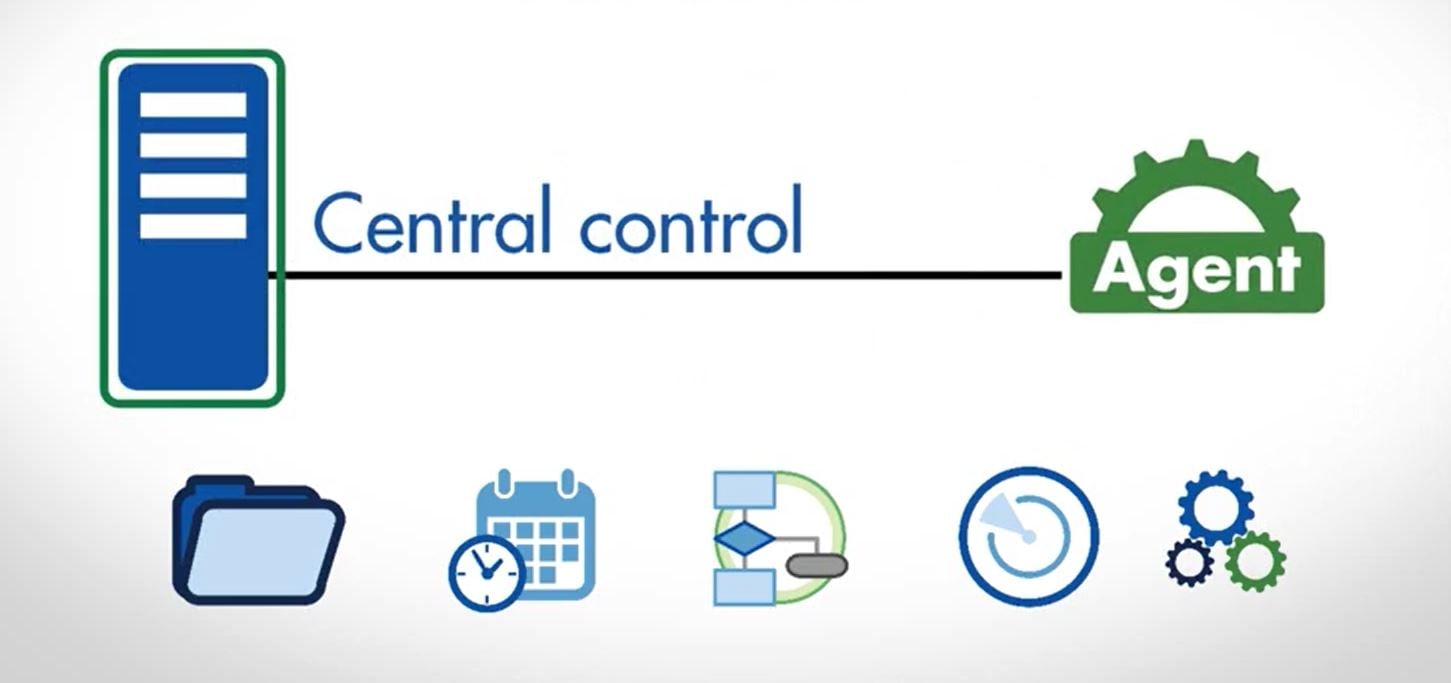Are MFT remote agents the right
solution for your organisation?
MFT remote agents help you get so much more out of your managed file transfer solution, maximising value and improving efficiency. This blog post explains what an MFT agent is, its role and function, plus example use cases.
What are MFT remote agents?
Managed file transfer (MFT) remote agents are effectively clients that can be centrally managed. MFT agents provide real-time file transfer capabilities that are controlled by you, from a central MFT server. This allows you to send and receive remote files between branch offices, cloud environments, hybrid servers, and on-premise servers. You can offload workload execution to a remote machine. You can also deploy and control workstations from just one interface while keeping focus on security and single-location management. There are five scenarios where MFT agents would make sense for your organisation.

1. Your organisation has multiple locations
If your organisation operates or accesses multiple locations, including local and remote sites, it can be difficult to keep data synchronised and accessible to everyone. MFT Agents tackle this issue directly. They can be installed on servers or workstations in your network to transfer files for processing, monitor folders and transfer files on an automated basis, and run commands or parse data. Using MFT Agents means your files will always be up-to-date between your main location (such as a corporate data centre) and other places, like stores or branch offices.
MFT Agents simplify and automate sent data, and they’re easy to use. You can roll out new files to multiple locations or execute custom scripts on several remote servers at once. Just combine your location-based MFT Agents into a group and schedule what user-defined tasks you need to run on those Agents at a specified time.
2. You want to move files between the cloud and your network
As organisations expand to encompass more employees, locations, and clients, the benefits of using the cloud become more and more apparent – as do security concerns. MFT Agents can be installed on server instances within cloud infrastructure, like Amazon AWS and Microsoft Azure. These MFT Agents can move files between the cloud and your private network automatically, all while keeping your data secure and encrypted.
Your central MFT server should be able to make connections using SOAP and REST APIs, which makes it straight forward to interface with cloud-based applications using Amazon Web Services and Microsoft Azure.
3. You need to connect with trading partners
MFT Agents can be installed on servers owned by your trading partners. Whenever a trading partner places a file in a folder managed by the MFT Agent, your central MFT server can automatically pull the file to your organisation’s network, giving you speedy updates on everything you need to know. In turn, you can do the same, pushing files to your trading partners as the need arises.
Further Reading:
4. You are looking for a cost effective way to deploy MFT across your organisation
Organisations can use MFT Agents to deploy MFT across a hub-and-spoke designed internal network. This is achieved by installing MFT Agents on servers or workstations where file transfers need to be performed. Automating your MFT Agents and installing only where needed will greatly reduce the manual work associated with complex and ever-changing environments.
5. You need a quick and secure way to transfer your data
With the onslaught of data breaches in recent years, security is always a primary concern. Timely transfers and file management is also important, especially for organisations working under intense deadlines. MFT solutions address security by encrypting the communication between each MFT Agent and central MFT server with SSL/TLS. Authentication can be set up with a secure, multi-step process, and all MFT Agent interfacing is centrally managed and under your control.
MFT agents case studies
There are lots of use cases of businesses using MFT remote agents to benefit. Here are some of the most popular examples our experts have worked on recently.
Lab work
- An active use case for one of our customers
- Agents are installed on lab computers
- Data is automatically sent to cloud storage via the GoAnywhere server in a hybrid deployment (GoAnywhere & GoAnywhere MFTaaS)
- Templates allow a common configuration for all computers
Publically accessible devices
- Traffic speed cameras, traditionally take pictures and periodically upload them via FTP
- Using a folder monitor the images can be uploaded immediately via secure HTTPS link
- Software can be automatically distributed to cameras
- Remote agents can execute native commands to install software as well as distribute
Mobile users
- Obviously for laptops and other mobile devices
- Consider trains – an active use case for one of our customers
- Potentially exchange information with buses
- Traffic and route information
- Passenger numbers (especially useful in lockdown!)

Supply chain
- Remote machines in factories and warehouses
- Initiate transfers for picklists
- Distribute delivery run information
- Return stock level details to central systems
Pro2col experts have delivered many more MFT remote agent use cases. They will be happy to talk through your use case and requirements and outline other examples of MFT remote agents in action. Contact us at any time.
Further Reading:

Take the risk out of selecting an MFT solution with our free, independent comparison service!
Our comparison report identifies the right solution for your needs and budget. Complete a series of questions and receive a bespoke product recommendation from our technical experts.
